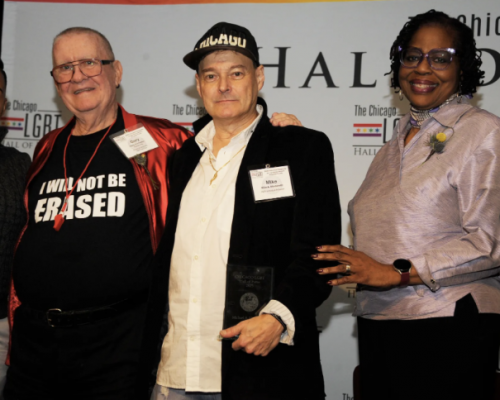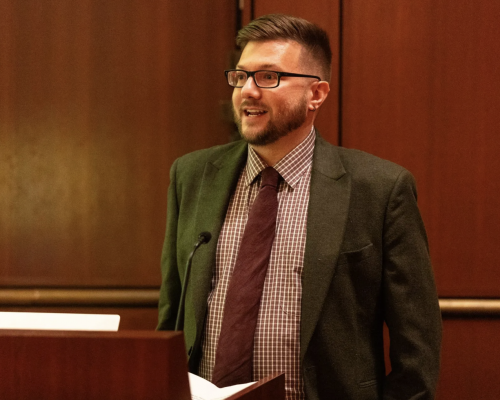by Chuck Colbert
Earlier this month, the National Lesbian & Gay Journalists Association (NLGJA) announced its 2013 inductees into the LGBT Journalists Hall of Fame.
They are Bob Ross and Mark Segal. The late Ross (1934-2003) was founder of the Bay Area Reporter (BAR). Segal is founder of the Philadelphia Gay News (PGN).
The LGBT Journalists Hall of Fame was established in 2005, recognizing journalists for their commitment, courage and dedication to LGBT issues in the media. Since then, NLGJA has honored a total of 23 journalists in the LGBT community.
Matthew Bajko, assistant news editor of Bay Area Reporter, will accept the honor in Boston on behalf of the publication and its late founder.
In voicing gratitude, BAR publisher Michael Yamashita said, “It’s gratifying that this honor recognizes Bob Ross’ contribution to the LGBT movement as an early founder of gay media. Like many of his colleagues, he fulfilled a need to keep our community informed from our own perspective, which inevitably led to successes in seeking equal rights for all. His professional legacy lives on in the Bay Area Reporter, the country’s oldest LGBT weekly newspaper that’s never missed an issue since 1971. His philanthropy continues through the Bob Ross Foundation, which contributes to many LGBT and local charities.”
BAR’s Bob Ross
Ross, along with Paul Bentley, founded San Francisco’s Bay Area Reporter on April 1, 1971, according to NLGJA. Bentley sold his interest in 1975. By 1979, Mayor Dianne Feinstein was asking Ross and San Francisco Sentinel publisher Charles Lee Morris to investigate the city police department’s response to riots following the sentencing of Dan White for the assassinations of Mayor George Moscone and openly gay Supervisor Harvey Milk. Today, BAR is one of the two oldest weekly LGBT newspapers in the country, with a circulation of about 29,000.
One of Ross’ most trying challenges was how to respond to the AIDS crisis beginning in the early 1980s. He decided in 1983 on extensive coverage. That year, BAR reported that 40 percent of all persons with AIDS were members of minority groups, demolishing the idea of AIDS as a gay white disease. In 1984, as tensions emerged between health concerns and preserving a culture of sexual freedom (the latter supported by his editor, Paul Lorch), Ross sided with health regulations. Subsequently, Lorch left the newspaper.
From 1985 until 1998, Ross also published 20 issues of Gay Comix.
When Ross died in 2003 of diabetes complications, he left an estate of more than $11 million in addition to the Bay Area Reporter itself.
Before his death, Ross established the Bob Ross Foundation to give money to a wide variety of Bay Area causes, ranging from AIDS organizations to the San Francisco Ballet. Earlier this year, it was estimated that the foundation will give away all of its money by 2023, including proceeds from a legal requirement that it sell at least 80 percent of the Bay Area Reporter by 2016.
PGN’s Mark Segal
Mark Segal founded Philadelphia Gay News as a monthly in 1976, after being inspired by Frank Kameny when they met in 1970, according to NLGJA. Segal has been publisher of the now-weekly newspaper ever since. Today, PGN is one of the two oldest LGBT weekly publications in the country, and the largest on the East Coast, with a weekly circulation of about 50,000.
Before Segal started PGN, however, he was a gay activist. In 1972, after being thrown out of a dance competition for dancing with his male partner, Segal crashed the evening news broadcast of WPVI-TV, in what became known as a “zap.”
By 1973, Segal, along with Harry Langhorne, calling themselves Gay Raiders, had zapped “The Tonight Show,” “Today,” “The Mike Douglas Show,” and the “CBS Evening News with Walter Cronkite,” that time holding a sign saying “Gays Protests CBS Prejudice.”
Starting at Segal’s April 1974 trial for zapping Cronkite, the CBS anchor asked Segal for details on the gay community’s media complaints. As a result, “CBS Evening News” substantially increased its coverage of gay news and Cronkite became a supporter of gay rights.
In 1975, Segal went on a hunger strike and a “sit-in” at the Philadelphia City Council to call attention to the need for a gay-rights ordinance. In 1976, PGN used Pennsylvania Department of Justice memos to show that state police were entrapping gay men seeking sex. In the late 1970s, PGN was publicizing how legislators voted on laws that concerned the gay community.
By 1981, PGN published a series about drug and alcohol abuse within the gay community and was mainstream enough to boast about its straight readership. In 1993, Philadelphia Magazine’s “Best of Philadelphia” gave Segal a Clout Award.
Starting in 2004, Segal has been elected and re-elected as president of the National Gay Newspaper Guild. After numerous awards and accomplishments over more than 40 years, Segal is most proud, however, to still be called a “gay activist.”
During a recent telephone interview, Segal, who will be on hand in Boston, said he was completely taken by surprise with his selection for the Hall of Fame. “I’m pretty good at intelligence. I was absolutely shocked,” he quipped.
“To be recognized by your peers is one of the most wonderful things that can happen in anyone’s life. I think it’s really a compliment to LGBT media and what we have gone through in the last 40 years or so to build our industry,” he added. “I thank those in mainstream media for recognizing that.”
Volume 15
Issue 5
SIDEBAR






